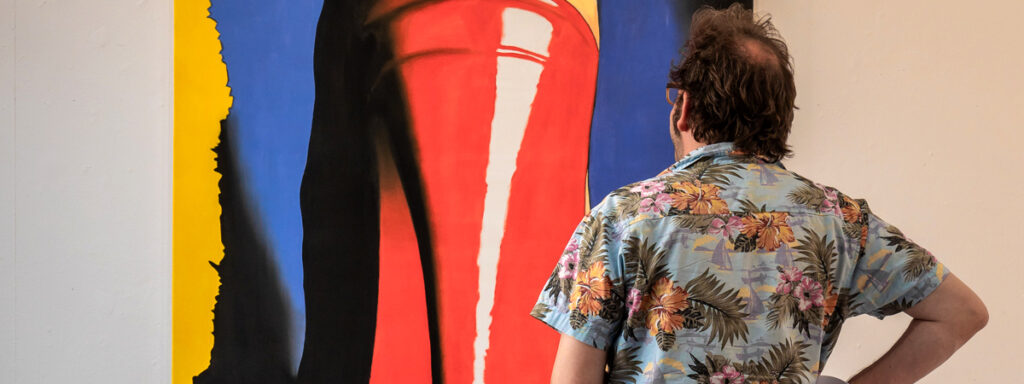If you’re like me, you’ve spent countless hours perfecting your digital art. The excitement of creating something unique is truly unbeatable. But, let’s face it, your art deserves more than just a spot on your hard drive. It deserves an audience, appreciation, and yes, even a paycheck. That’s where digital art marketing comes into play.
In this guide, we’re diving deep into the world of selling your digital creations online.
Understanding Your Audience

Identifying Your Niche
When I started my journey into digital art marketing, I thought my work could appeal to everyone. I quickly learned that wasn’t the case.
It’s crucial to identify your niche – a specific group of people who are passionate about what you create.
Whether it’s fan art, concept design, or abstract expressionism, there’s a niche waiting for you.
Remember, when you target a niche, you’re more likely to connect with people who truly appreciate your art.
Creating Buyer Personas
One of the best ways to understand your audience is by creating buyer personas.
Buyer personas are fictional representations of your ideal customers. Imagine their age, interests, and even their backstory.
This exercise helps you tailor your marketing efforts to speak directly to them.
For instance, if you’re creating digital art aimed at gamers, your marketing language and visuals should resonate with that gaming culture.
Researching Trends
Stay updated with the latest trends in the digital art world.
Follow art forums, social media, and art-related news.
Remember when Pokémon Go took the world by storm? I certainly do. I still play from time to time.
Well, that was a massive opportunity for artists who could create Pokémon-inspired digital art.
Being aware of trends can help you stay relevant and create art that people are actively searching for.
Building a Strong Online Presence
Leveraging Social Media for Digital Art Marketing
Social media is your best friend when it comes to marketing your digital art. It’s where artists like you can shine. But, don’t try to be everywhere; choose platforms that align with your niche.
For instance, Instagram and Pinterest are fantastic for visual artists.
Share your work consistently, engage with your audience, and use relevant hashtags.
I’ve seen artists go from a few hundred followers to thousands just by consistently showcasing their art.
To learn more about social media marketing check out, “Social Media Marketing 101: Building Your Brand’s Presence.”
Optimizing Your Website for Art Sales
Having a professional website is like having your own art gallery. It’s the place where potential buyers can get up close and personal with your creations.
When designing your website, prioritize user experience.
Make it easy for visitors to navigate, find their favorite pieces, and, most importantly, make a purchase.
Don’t forget about SEO, especially longtail keywords like “gaming digital artist” or “fantasy digital art.” These are the key phrases your potential customers are typing into search engines.
Email Marketing: Building a Fanbase
Now, let’s talk about email marketing. Collecting email subscribers is a goldmine for digital artists. These are people who are genuinely interested in your work and want to hear more from you.
Send them engaging newsletters showcasing your latest pieces, exclusive discounts, or behind-the-scenes content.
I’ve found that email marketing builds a strong connection with your audience and can lead to repeat buyers.
Showcasing Your Artwork
Quality Photography and Presentation
Presentation is everything. High-quality images of your digital art are essential.
Invest in good lighting and a decent camera (or hire a photographer) to capture your art’s true essence.
Another trick is to showcase your art in real-life settings. It helps potential buyers envision your art in their own spaces.
Creating a Captivating Portfolio
Your portfolio should tell a story. Arrange your art in a way that guides viewers through your creative journey.
Share insights about your artistic process, and don’t be afraid to reveal a bit of your personality.
People love connecting with the artist behind the art. It adds depth and meaning to your work.
Licensing and Print-on-Demand Services
Expanding your revenue streams is a smart move.
Consider licensing your art for use in various media or partnering with print-on-demand services.
This way, you can offer your art on various products like posters, mugs, or phone cases, reaching a broader audience.
I have an article, “Print-on-Demand for Artists: Turning Designs into Sellable Products”, check it out for more insight on print-on-demand.
Pricing Strategies
Evaluating Your Art’s Value
Pricing can be tricky. Start by evaluating the value of your art based on factors like time invested, complexity, and demand. Don’t undersell yourself; your art has worth.
Dynamic Pricing Strategies
Experiment with dynamic pricing. Limited editions and exclusivity can drive up demand.
Flash sales and discounts can also create a sense of urgency. Just be strategic and clear in your pricing approach.
Engaging Your Audience
Live Art Demonstrations and Q&A Sessions
Engagement is key to building a loyal following. Consider hosting live art demonstrations or Q&A sessions.
It’s a fantastic way to connect with your audience in real time, answer their questions, and even take requests. It’s like inviting them into your creative process.
Hosting Virtual Exhibitions
Virtual exhibitions are all the rage now. They allow you to showcase your art to a global audience without the need for a physical gallery. Plus, you can interact with visitors through live chats or video calls.
Collaborations and Art Challenges
Collaborations with other artists or participating in art challenges can boost your exposure. It’s an opportunity to tap into each other’s audiences and create something unique.
Handling Sales and Shipping
Choosing the Right Payment Gateway
Selecting the right payment gateway is crucial. Make sure it’s secure, easy to use, and integrates seamlessly with your website. Customers need to trust your payment process.
Shipping and Packaging: A Seamless Experience
When your art finds a buyer, it’s essential to ship it safely and professionally.
Protect your art with proper packaging to ensure it arrives in pristine condition.
Be transparent about shipping costs and options to avoid surprises for your customers.
Customer Service and Feedback
Building Long-term Relationships
Treat your customers like VIPs. Building long-term relationships can lead to repeat business and referrals.
Send thank-you notes, follow up on their satisfaction, and keep them in the loop about your latest creations.
Also, you may consider adding in a freebie as a thank you or at a certain spending amount. A little bit goes a long way.
Handling Feedback Gracefully
Feedback, both positive and negative, is valuable. Embrace it gracefully, learn from it, and use it to improve. Remember, every critique is a chance to grow as an artist.
Analytics and Optimization
Tracking Your Marketing Efforts
Use tools like Google Analytics and social media insights to track your marketing efforts. Understand what’s working and what isn’t.
Iterating for Success
Never stop experimenting. Try A/B testing different marketing strategies, headlines, or visuals. Continual improvement is the key to long-term success.
Legal Considerations
Copyright and Licensing
Protect your intellectual property. Understand copyright laws and consider licensing agreements to safeguard your art’s rights.
Contracts and Agreements
When collaborating with others or partnering with print-on-demand services, ensure you have clear contracts and agreements in place. It’s better to be safe than sorry.
Final Thoughts
Selling your digital art online is an exciting journey filled with opportunities for creative expression and financial gain.
Remember that success in digital art marketing takes time, dedication, and a willingness to adapt.
Keep honing your skills as an artist and marketer, and before you know it, your art will find its way into the hearts and homes of countless admirers.
So, go ahead, start implementing these marketing hacks, and let your digital art shine!



